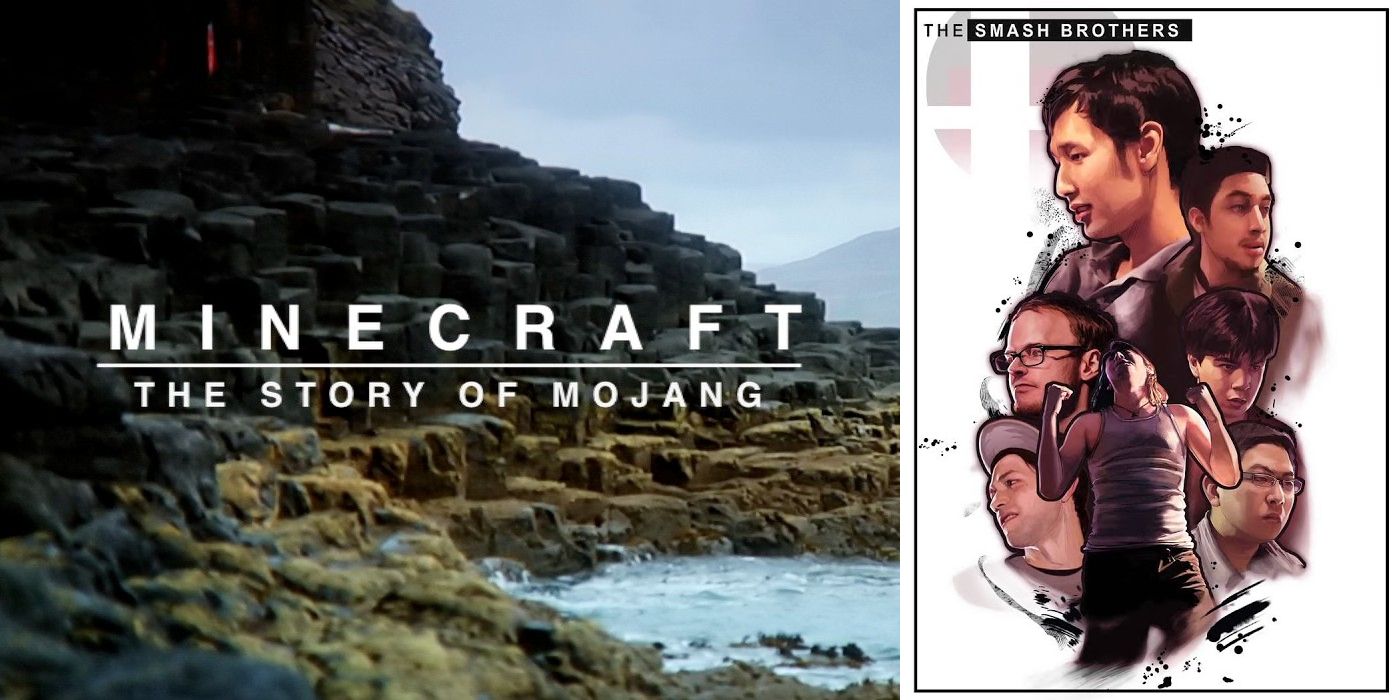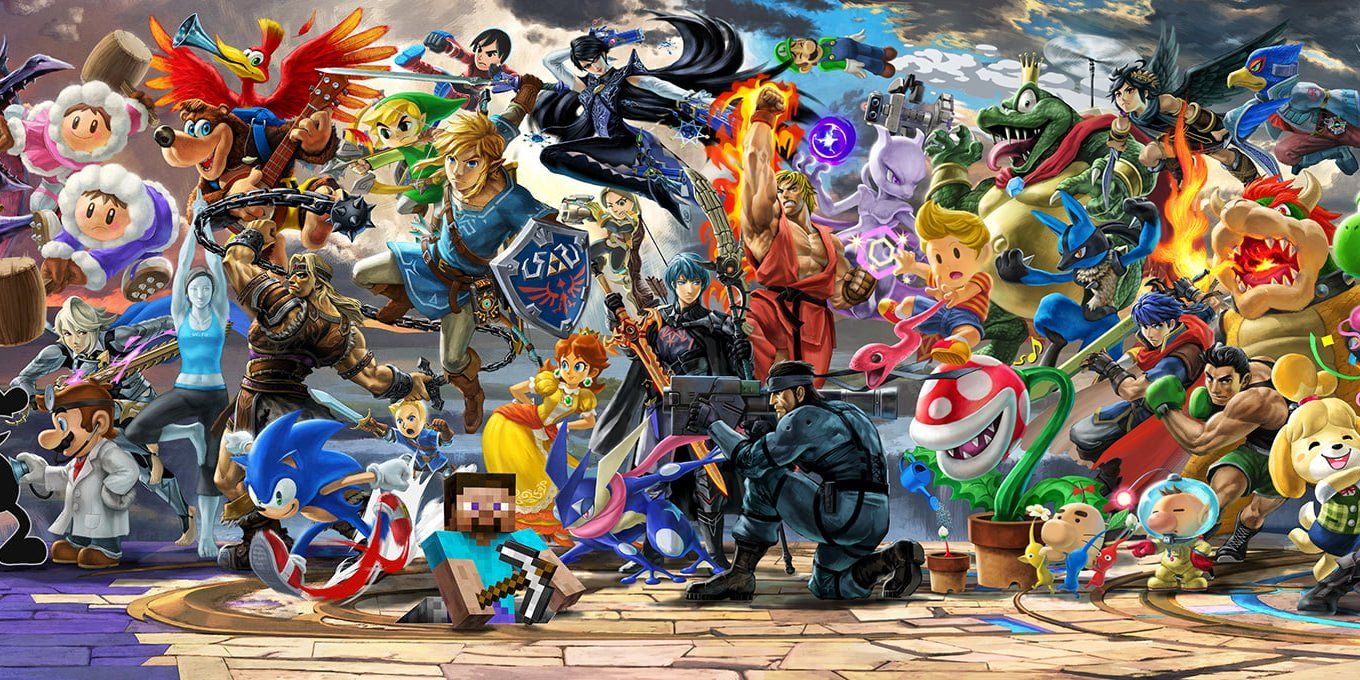It’s natural for Super Smash Bros. Ultimate, aka the best-selling fighting game of all time, to finally welcome the blocky poster boy for the best-selling video game ever, Minecraft’s Steve, to its enormous roster of fighters. Both franchises revolutionized gaming in their own way; Masahiro Sakurai’s Smash Bros. invented the platform fighter back 1999; while Minecraft pretty much crafted its own thing when it started to make waves back in 2010.
Given both games' massive cultural impact, it's also no wonder they each have popular documentaries that are not only big within their communities, but even hold up well in the eyes of all gamers. Funnily enough, both films started production around the same time in 2011, premiering less than one year apart from each other, though that’s where the similarities end as they take very different approaches to telling each game's story.
As its title suggests, Minecraft: The Story of Mojang mainly sets its gaze on the developers behind the game, the journey from a one-man indie operation to the worldwide phenomenon that made its way onto every device with a display feature. On the other hand, The Smash Brothers documentary, just like the competitive scene it showcases, is forced to play things a bit differently by instead focusing on the players behind the game, due to it lacking official company support from Nintendo.
Unlike Minecraft, Super Smash Bros. was conceived with a very specific purpose in mind: a fighting game that absolutely anyone could pick up with instantly. It's just a bunch of Nintendo’s lovable characters beating each other up, all fun and no complicated buttons. As seen in the documentary, that changed as Super Smash Bros. Melee opened up a new world of possibilities thanks to a wide repertory of advanced techniques still being discovered today.
While The Smash Brothers is completely centered around the franchise’s second entry, spanning from 2004 to 2013, the birth of its competitive scene spread quickly onto Smash 64 and every subsequent sequel since, up until the current title Super Smash Bros. Ultimate which last year was EVO's biggest record-setting event. Even Melee, set to celebrate its 20th anniversary in 2021, is still a relevant competitive game, an almost unheard of feat in the world of e-sports.
And then there’s Minecraft, shown being built from scratch to be the ultimate sandbox experience, offering an almost infinite world with endless possibilities. Since its official release in 2011, players have built elaborate pieces like functioning music boxes, computers or entire Minecraft cities, with the game even finding its way inside classrooms for educational purposes.
Despite Minecraft effectively becoming a Microsoft property in 2014 with Mojang’s acquisition putting them under the Xbox Game Studios branch, the title’s indie roots and creative spirit keep it free from the constraints that many games can only break from with the help of mods and other workarounds.
That independent spirit is echoed throughout nine episodes The Smash Brothers, as it illustrates just how far gamers are willing to go in an effort to break those shackles, going from basement tournaments all the way to a fundraiser backed EVO 2013 bid, where Nintendo unsuccessfully tried to block Melee from being streamed.
As Masahiro Sakurai puts it, Smash Bros. was meant to be a fun party game, not a competitive fighter like Street Fighter or Mortal Kombat. The developer goes as far as outright refusing to call Smash a fighting game and removing mechanics highlighted in the film as Melee’s appeal from its next entry, a move that only made the competitive scene stronger and to which the documentary probably its owes existence to.
The Story of Mojang delves into the creative process of a game that lacks any hard-set rules as there is no proper way to play Minecraft, whether it’d be only embracing its initial survival free-roaming aspect, or by jumping in the kind of block-made rabbithole that makes people work on their worlds for years.
The Smash Brothers is testament to the same premise that there is no right way to play a game, other than what its community decides to do with it. There is no other franchise like Smash, because there is no party mode Street Fighter or competitive Mario Party. It's a unique game in the sense that two decades since its debut everyone can have fun with it, be it in 4 player free-for-all or no items competitive settings.
The stark contrast between Minecraft’s relaxing laid back music and The Smash Brothers’ electronic intro, loud cheers and crowds suggests the two share nothing in common, yet it’s quite the contrary. Both community-made documentaries are among gaming’s finest and they emphasize the only thing that can keep a game going and growing for more than decade is a willingness to implement fresh ideas and a dedicated player base capable of expanding them well beyond what their developers could have imagined.
The Smash Brothers and Minecraft: The Story of Mojang are both available on YouTube.
Steve will be available as DLC for Super Smash Bros. Ultimate on October 13.


